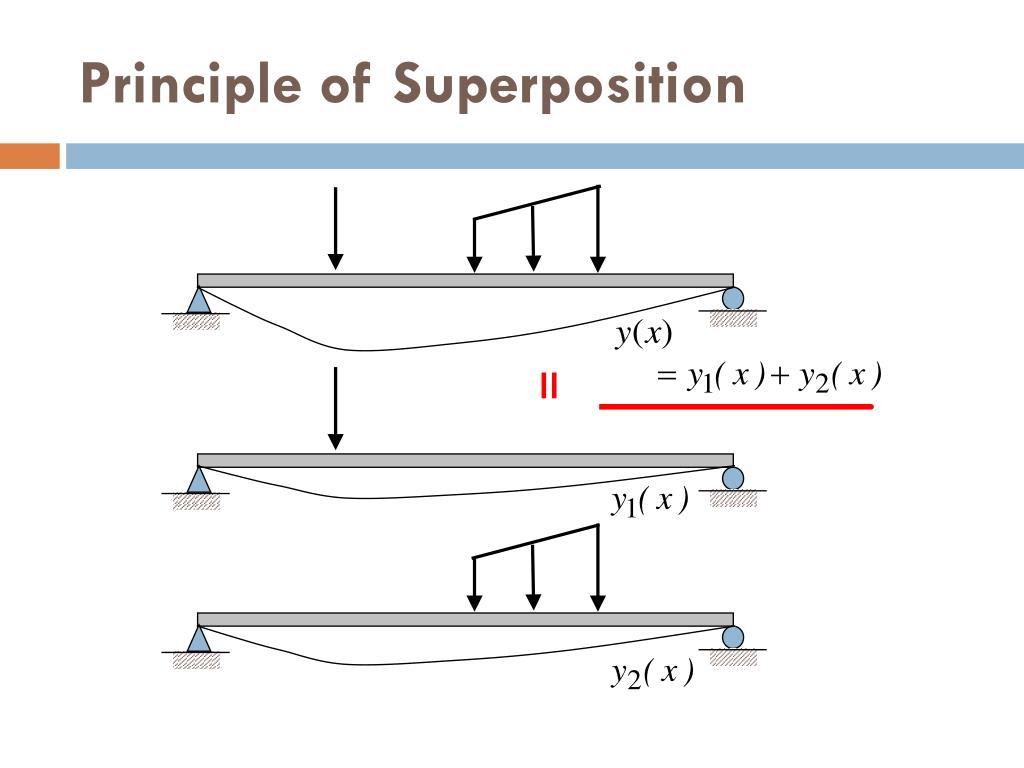
To think about: What happens if the two have different masses? Do we still get these beats - can the larger pendulum transfer all its kinetic energy to the smaller?Įxercise: try pendulums of different lengths, hung so the bobs are at the same level, small oscillation amplitude, same spring as above. Other articles where principle of superposition is discussed: philosophy of physics: The principle of superposition: One of the intrinsic properties of an. \(Δk\) is called the wavenumber spread of the wave packet, and it evidently plays a role similar to the difference in wavenumbers in the superposition of two sine waves - the larger the wavenumber spread, the smaller the physical size of the wave packet.\), but the second term sets the overall oscillation amplitude: it's slowly varying, going to zero periodically (at which point the other pendulum has maximum kinetic energy). According to the principle of superposition, two integral types of the constitutive law are compared, and the generally correct form is pointed out. In the classical view of the universe, particles do not.

The most commonly used set of solutions is possible solutions, also known as Hilbert space. The superposition principle can be used to describe the interference and diffraction behaviour of waves. If \(Δk\) is changed to 2, so that wavenumbers in the range 2 ≤ k ≤ 6 contribute significantly, the wavepacket becomes narrower, as is shown in figures 1.11 and 1.12. The principle of superposition applied to this problem states that the total change in length of the bar is equal with the sum of the changes in length of the. Superposition is a quantum principle that refers to a physical system that exists in multiple states simultaneously based on a specific set of solutions.

The sum of two orbital solutions is not an orbital solution, so the. The principle of superposition simply states that on a linear elastic structure, the combined efect of several loads acting simultaneously is equal to the. principle of superposition: when two waves simultaneously arrive at a.

The irradiance at a point where multiple waves exist is determined from the square of the sum of the elds. obeying Newtons laws of classical mechanics, and radiation to be constituted by. However, the resulting dynamics of masses in gravitational fields does not have that property. The fact that elds can be added is called the principle of superposition. Energy is additive and gravitational potentials obey the superposition principle, so they are, in a sense, linear. e., for \(3 ≤ k ≤ 5\) in this case, contribute significantly to the sum. A linear system obeys the superposition principle by definition. The quantity \(Δk\) controls the distribution of the sine waves being superimposed - only those waves with a wavenumber k within approximately Δk of the central wavenumber k 0 of the wave packet, i.

12: Representation of the distribution of wavenumbers and amplitudes of 20 superimposed sine waves with maximum at k 0 = 4 and half-width Δ k = 2.


 0 kommentar(er)
0 kommentar(er)
